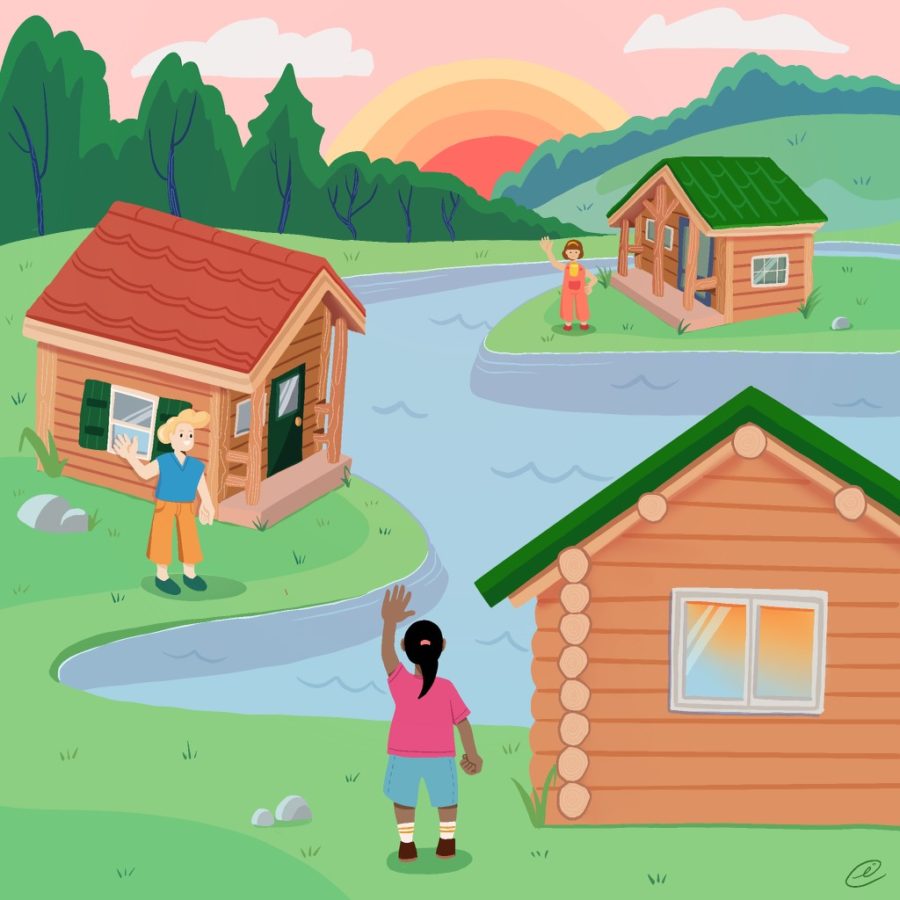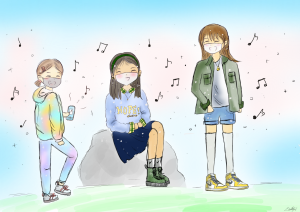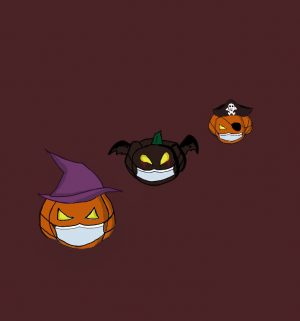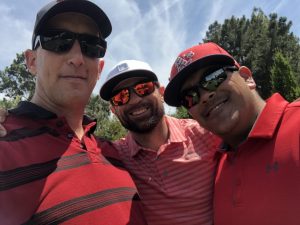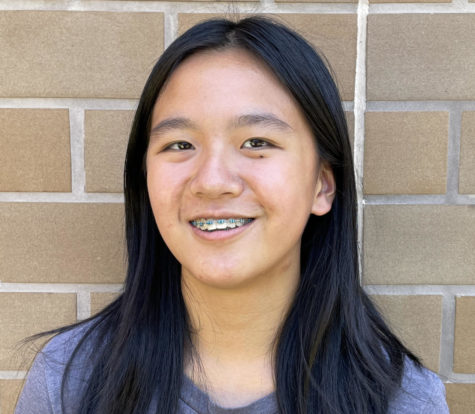Approaching post-quaratine social connections with gratitude
Ivana Chen
With vaccine mandates allowing society to gradually reopen, one way for us to reconnect is through gratitude.
October 25, 2021
It wasn’t long ago that I realized I kind of missed trick-or-treating. I had never hated it, per se — it was just that I could never come up with a good costume, there was always that one house with a non-PG murder scene, and after a few days, I’d find my mom feeding my candy stash to someone else’s kids anyway. But when anticipating this year’s Halloween, I found there was something to miss about those nights when the sidewalks were crowded with children and laughter and shouts, and obliging strangers opened the door briefly in succession to grant candy to smiling faces.
COVID-19 forced us to become extremely isolated, uprooting the connections that we accepted as part of our annual rhythm. Yet as society reopens, the isolation of quarantine can serve a double purpose: We now have the opportunity to more deeply appreciate our social relationships, and that might just be the key to reconnecting.
There is a reason social isolation hit society so hard—according to the Pew Research Center, 41% of U.S. Americans reported that the pandemic had a negative impact on their personal relationships. A year and a half spent in isolation is an unnatural adaptation at best, in part because as humans, we are not meant to be alone.
As DVHS AP Psychology teacher Mr. Thomas Chamberlain states, human behavior points to the need to belong in social groups, whether it’s humans mimicking each other’s behaviors and body positions or the evolutionary theory that we were safer in larger groups.
“In jail, they’ve identified that one of the worst punishments is isolated confinement,” he said. “There just seems to be this human drive to be a part of groups … and I think with the pandemic, we saw a lot of people’s mental health decline because they weren’t among people or social groups anymore.”
This is not to say that there were no silver linings: in the same study by Pew Research, 33% found their relationships improved as less time spent at work and school meant stronger bonds at home. But it’s important to differentiate the personal impact quarantine took on for each individual from generalized assumptions, such as the idea that stay-at-home orders were an introvert’s paradise.
Chamberlain explains that being more introverted or extroverted can change the threshold of social stimulation that someone needs to feel fulfilled, but it “doesn’t change your desire to have close relationships.” So when COVID took away even basic moments of human connection, the struggle of solitude was not limited to any one personality type.
Yet despite the difficulties of over a year gone remote, the return back to in-person interaction may be a challenge in itself. Among the excitement of packed football games, thriving school dances and clubs in full swing, it’s important to consider those who are still feeling anxious about a full-scale return. In fact, the American Psychological Association’s 2021 Stress in America report found that nearly 50% of Americans feel uneasy returning to in-person interaction when the pandemic ends.
Faced with this, it’s hard not to liken COVID to a warzone: when it’s around, at the very least there’s a clear enemy to fight. But once it’s gone, it leaves behind the reality of the fallen, the divided populus and the confusion of the return. People of differing and disproportionate impacts are told to go back to their normal lives, but we can’t forget that the definition of a normal life for each person has also changed.
There’s no single neat solution to figuring out the norms of human connection again, especially when there is such a broad spectrum of sentiments from those who are all-in for a thriving social scene to those apprehensive at continued waves of reopening. In cases like these, DVHS counselor Mrs. Meagan Sellers advises leaning into the appreciation of things we might have taken for granted before COVID.
“Even though the romance of being back at school is done … I think we have different perspectives now,” she said. “We appreciate the simple part of walking on a campus and learning from a teacher who’s in front of you and not on a screen.”
The best thing we can do then, perhaps, is to take on a perspective of gratitude — for the better moments when times are improving; when they aren’t, for things keeping us sane. Especially when we’re feeling thankful for another person, it is a simple reminder that connections with others, however small, are important to us; one good thing that can come out of the pandemic is our ability to appreciate our relationships with others more.
Sellers observes that many at DVHS share the gratitude of being back despite the less ideal aspects of in-person school.
“I do think that [we are] just like, ‘Okay, this isn’t so bad that I have to wear this mask,’ or … just thinking back to last year, like ‘Oh God this is so much better even though I’m struggling. It’s better than being in my room by myself,’” she said.
Even when feeling apprehensive about the sudden influx of interaction, gratitude acts as a way for those experiencing anxiety or awkwardness to transition into relationships they can be comfortable in. It’s akin to noticing the people one feels safe around and appreciating their presence, filling up a mental rewards bar that makes it easier to be comfortably immersed in a social life tailored to one’s needs.
With all that being said, the in-person school fatigue is real. But there is something that warms my heart when thinking about being back together with people again. Maybe it’s sitting shoulder-to-shoulder with friends at lunch. Maybe it’s playing music with others and literally dropping a bow mid-concert, but playing a live concert all the same. Or maybe it’s going into Halloween season knowing another year will pass as a costume-less chaperone, but if Halloween can go on, then maybe that’s a sign pandemics too shall pass, all the same.


